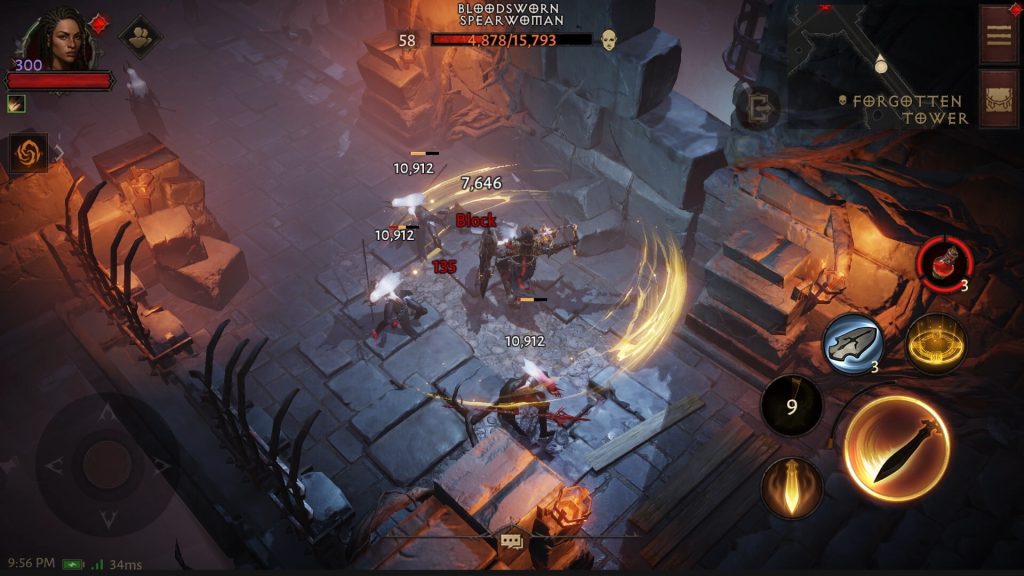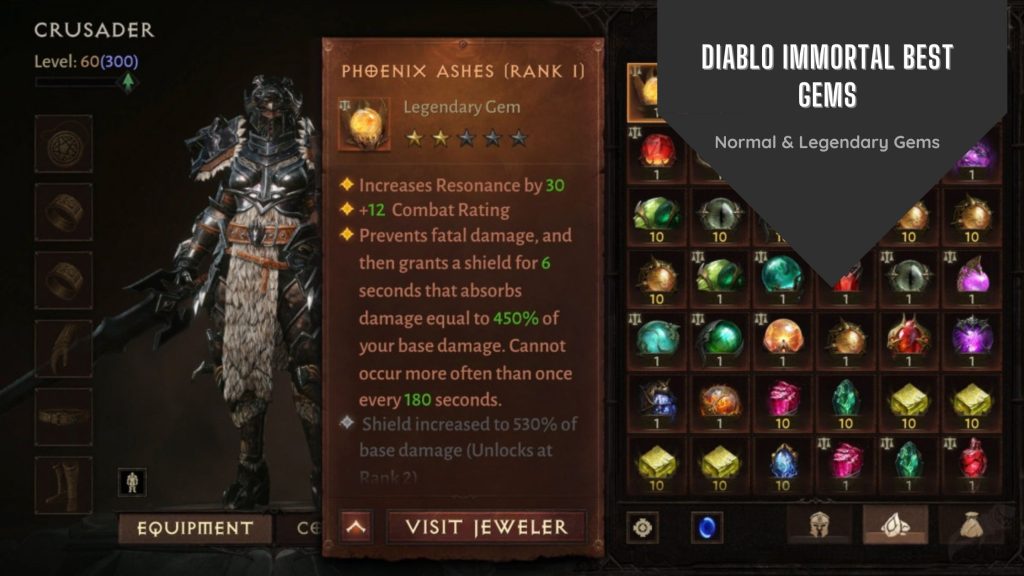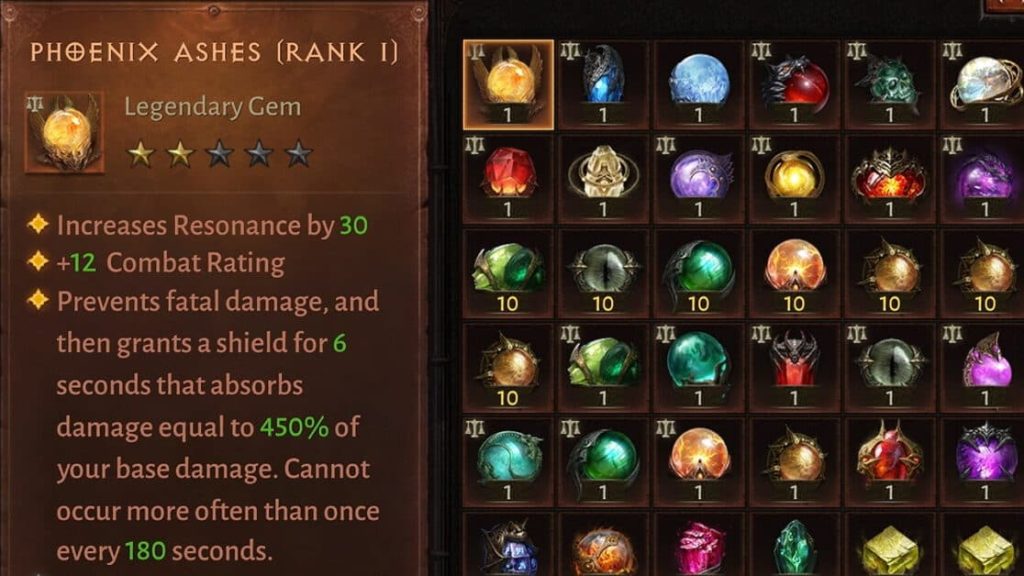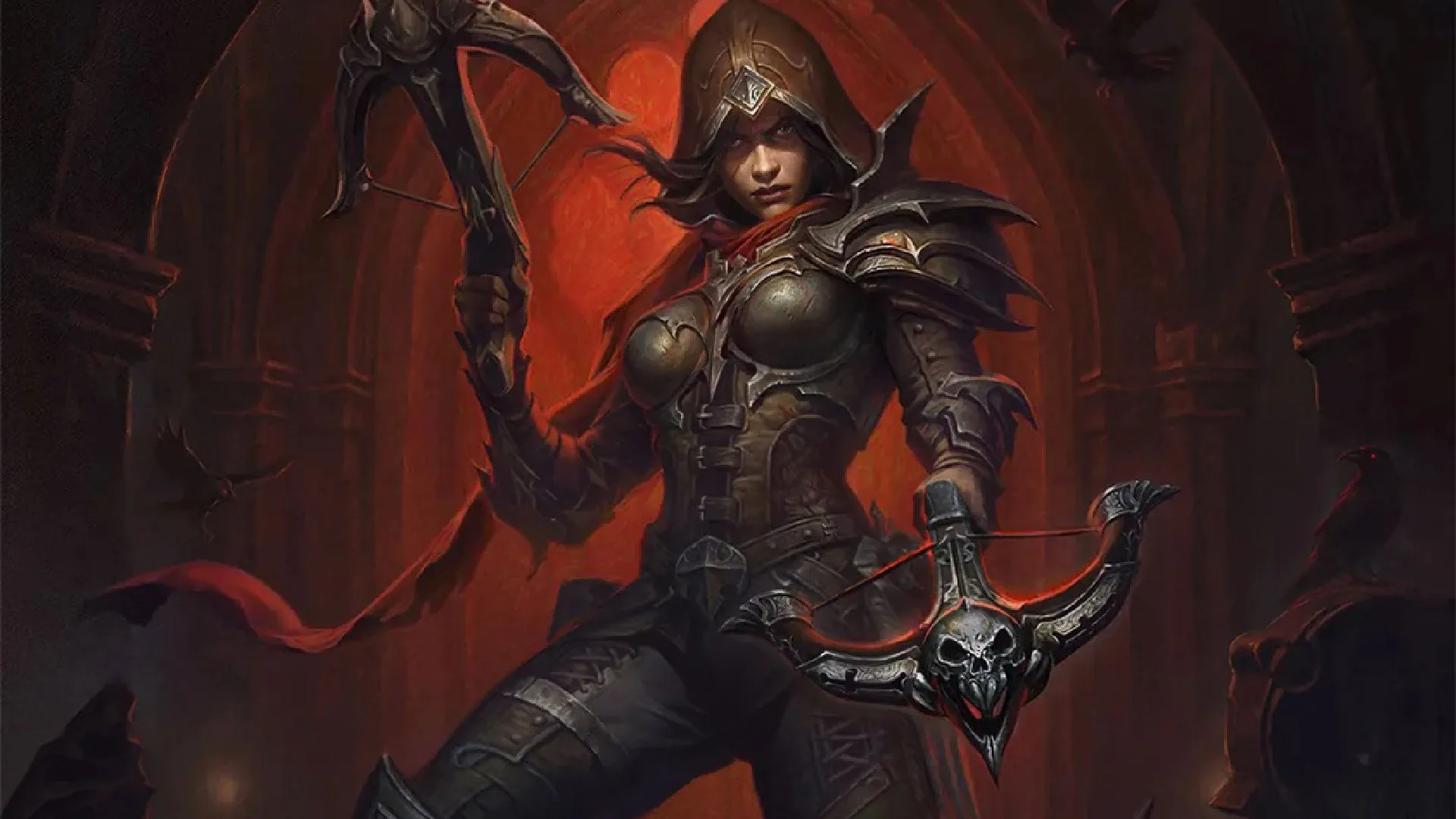Introduction
In the ever-expanding world of Diablo Immortal, the introduction of Auxiliary Gems marked a significant milestone in gem customization and player flexibility. This innovative feature empowers players to merge the strength of their existing high-level legendary gems with the unique effects of other gems, without losing the hard-earned resonance or combat rating. For players who have invested substantial resources into upgrading their primary gems, Auxiliary Gems offer a cost-effective and strategic solution for experimenting with new abilities without the grind of starting over from rank one. This development has not only enriched gameplay diversity but also expanded the creative ways in which builds can be customized for various game modes.
What Are Auxiliary Gems?
Auxiliary Gems are legendary gems of the same star-rating that can be embedded into a primary legendary gem. The concept is straightforward yet powerful: the main gem retains all its core stats, including combat rating, resonance, and magic find, but its active effect is replaced with the rank-1 ability of the auxiliary gem. This allows players to maintain the benefits of a heavily upgraded gem while enjoying a completely different gameplay effect, essentially giving the player a second layer of customization for their build.
How Auxiliary Gems Function In Practice?
Consider a situation where you possess a fully upgraded, high-resonance gem that excels in certain combat scenarios but lacks utility in others. With the Auxiliary Gem system, you can pair it with another gem whose effect you desire for a specific challenge. For example, you could replace the damage-focused ability of your main gem with a crowd control effect for PvP battles or with an area-of-effect ability for farming mobs in dungeons. Since only the auxiliary gem’s rank-1 ability is applied, you do not need to invest resources into leveling it up just to test its potential.
Strategic Advantages And Player Freedom
The greatest strength of the Auxiliary Gem system lies in its flexibility. In Diablo Immortal, certain encounters and activities require specific traits such as high mobility, sustained healing, or burst damage. Auxiliary Gems allow players to adapt on the fly without replacing their main gem or losing the stat boosts that took months to build. This is particularly valuable for competitive players who switch between PvE and PvP regularly, as well as for those tackling high-level rifts that require specific effects to succeed. The feature also encourages experimentation, giving players the freedom to explore combinations they might otherwise avoid due to the high cost of upgrading multiple gems.

Requirements And Restrictions
To maintain game balance, the Auxiliary Gem system comes with a set of rules. Both gems must be of the same star-rating, meaning a one-star auxiliary gem cannot be paired with a two-star main gem. Additionally, the gem slot must meet the required upgrade threshold often rank five or higher before an auxiliary gem can be added. This ensures that players engage with the feature as part of their mid- to late-game progression rather than using it as an early-game shortcut. These restrictions keep the mechanic from undermining the value of dedicated gem upgrading while still offering meaningful customization.
Auxiliary Gems In The Context Of Other Gem Systems
The release of Auxiliary Gems coincided with other gem-related updates, such as Power Transfer and Infusion systems. These mechanics work together to give players unprecedented control over their gem builds. Power Transfer allows the benefits of upgraded gems to be applied elsewhere, while Infusion lets players fine-tune their stats. Combined with Auxiliary Gems, these systems create a robust gem economy within the game, reducing resource waste and opening more strategic possibilities for veteran and new players alike.
Community Reception And Player Feedback
The Auxiliary Gem feature was met with enthusiasm by a large segment of the player base, as it addressed a long-standing pain point having to fully upgrade multiple gems to try different abilities. Many praised the system for allowing them to adapt their builds to different challenges without sacrificing months of progression. However, not all feedback has been positive. Some players have encountered technical glitches, such as difficulty in pairing specific gems or losing auxiliary gems due to unexpected slotting issues.
Others have reported rare instances where pairing an auxiliary gem caused unintended effects or broke certain equipment functions. While these issues are relatively uncommon, they have sparked discussions within the community about the need for more stability and clear in-game instructions.
Best Practices For Maximizing Auxiliary Gem Potential
Players aiming to get the most out of Auxiliary Gems should approach the system strategically. First, plan your gem pairings based on the types of content you engage in most. If you’re a PvE-focused player, consider auxiliary effects that enhance farming efficiency or survivability during boss fights. PvP players may lean toward effects that provide control, burst damage, or evasion. Since the auxiliary gem only provides its rank-1 effect, choose abilities that are impactful even at their base level. Additionally, ensure that your main gem is as upgraded as possible before slotting an auxiliary gem, so that you maximize the benefit of retaining resonance and combat rating.

Common Challenges And Solutions
While the system is straightforward in concept, it can be tricky in execution. One common challenge is matching star ratings between main and auxiliary gems, as star levels are often tied to rarity and drop rates. Players should be patient when farming for potential auxiliary gems and avoid hastily upgrading a gem they don’t plan to use long-term. Another challenge is managing the cost of experimentation; even though the auxiliary gem itself does not require heavy investment, socketing changes may still consume resources. A disciplined approach testing combinations during low-stakes content before committing to high-end activities can help avoid unnecessary waste.
The Future Of Auxiliary Gems In Diablo Immortal
Given their impact on gameplay customization, Auxiliary Gems are likely to remain a permanent and evolving feature in Diablo Immortal. Future updates may expand the system to allow auxiliary gems of different star ratings, increase the rank at which auxiliary effects can scale, or add more diverse abilities to the gem pool. As the game’s meta continues to shift with new content releases, Auxiliary Gems will remain an essential tool for players seeking adaptability without starting from scratch. The developers may also take community feedback into account to improve system stability and provide more intuitive pairing options.
How Auxiliary Gems Affect Endgame Builds?
In the endgame of Diablo Immortal, where every stat point and ability choice can mean the difference between victory and defeat, Auxiliary Gems play a pivotal role. High-level content like Challenge Rifts, Helliquary raids, and high-paragon PvP arenas demand not just raw power but also adaptability. An Auxiliary Gem allows players to fine-tune their builds for specific encounters without compromising their core progression.
For example, a gem combination suited for fast-paced farming may be ineffective against a boss that requires sustained single-target damage. By swapping in an auxiliary that offers a defensive buff or a debuff effect, players can instantly reconfigure their approach to match the challenge at hand. This adaptability has significantly reduced the need to maintain multiple sets of fully-upgraded gems, making endgame optimization more efficient and rewarding.
Role Of Auxiliary Gems In Seasonal Events
Seasonal events in Diablo Immortal often introduce unique challenges and modifiers that can render standard builds less effective. In such cases, Auxiliary Gems act as a rapid adjustment tool. For instance, if an event introduces enemies with high resistance to certain damage types, players can use an auxiliary to switch to a gem effect that bypasses or counteracts those resistances. Likewise, in time-limited dungeons where speed is crucial, players might select an auxiliary with an ability that increases mobility or boosts area-of-effect damage. This capacity to adjust on a per-event basis ensures that players can remain competitive and enjoy event rewards without overhauling their core build.

Economic Impact on the In-Game Market
Auxiliary Gems have also influenced the in-game economy, particularly in markets where trading or gem crafting is available. Gems that may have been considered less desirable in the past due to low performance when fully upgraded have gained renewed value because their rank-1 effects can be highly effective as auxiliaries. As a result, players may now seek out a wider range of gems for strategic purposes, leading to more balanced demand across the gem market. This shift has encouraged more diverse farming and crafting patterns, as even lower-rank or niche gems can serve an important role in specific auxiliary setups. The ripple effect is an overall healthier market where gem diversity matters.
Synergy Between Auxiliary Gems And Gear Affixes
The Auxiliary Gem system becomes even more powerful when combined with well-chosen gear affixes. Gear pieces with affixes that amplify a particular damage type, status effect, or ability cooldown can greatly enhance the impact of an auxiliary gem’s rank-1 effect. For example, pairing an auxiliary gem that applies a slowing debuff with gear that increases damage to slowed enemies can create a potent synergy in both PvE and PvP. This encourages players to think beyond gems in isolation and consider how their entire build, from armor stats to weapon abilities, can work in harmony. The resulting gameplay depth rewards players who invest time in theorycrafting and experimenting with unusual combinations.
Predictions For Auxiliary Gem Evolution
Looking ahead, it is reasonable to expect that the system will evolve alongside other customization features in Diablo Immortal. Developers may expand the system to allow auxiliary effects to scale with the main gem’s rank, offering even more potent combinations. There could also be the introduction of special auxiliary-only effects that cannot be obtained through standard gems, further enhancing the value of the system.
As new legendary gems are released, their rank-1 abilities will likely be assessed not only for their standalone power but also for their auxiliary potential. The interplay between newly introduced mechanics and the existing Auxiliary Gem framework promises to keep the feature relevant for years to come, ensuring it remains a cornerstone of advanced build customization.
Conclusion
Auxiliary Gems represent a brilliant evolution in Diablo Immortal’s gem system, offering flexibility, cost-efficiency, and a greater degree of player freedom. By allowing a high-ranked gem to retain its powerful stats while swapping in a different ability, the system solves a major progression bottleneck that previously discouraged experimentation. While the feature is not without its technical hiccups and limitations, its value to strategic gameplay is undeniable. For players who want to tailor their builds to meet the demands of every challenge without sacrificing their hard-earned progress, Auxiliary Gems are a must-have tool in the arsenal.

